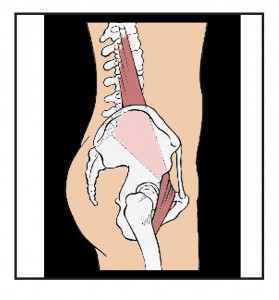 Over the years I have learned as much from students as from the teachers I have studied with. Teaching yoga is an interesting gig because you never know who is going to be taking your class. I had the great fortune to have a student named Lauree Wise from whom I learned so so so much.
Over the years I have learned as much from students as from the teachers I have studied with. Teaching yoga is an interesting gig because you never know who is going to be taking your class. I had the great fortune to have a student named Lauree Wise from whom I learned so so so much.
I am a very slow learner—it takes time for things to sink in once they get into my head. One day in a class years ago I was babbling something about the body that I didn’t understand and Laurie said, “You have to realize that the psoas is a back body muscle.” Since I don’t think quickly on my feet I bluffed my understanding with a nod of the head and carried on. But I put the phrase in my brain to percolate and a couple of years later came to understand what Lauree meant.
The psoas acts as a pulley system in the body; the hip bone is the pulley and the psoas in the rope. The pulley system allows the psoas to help the spine stay upright on top of the pelvis. It does this through the magic of reciprocal inhibition which allows the spinal muscles (erector spinea) to extend and lengthen up the back when the psoas tones in the front as it crosses the pelvis.
The back body part is how the psoas manages to work like a pulley. It attaches to the back half of the inner thigh, comes forward to cross over the pelvis before moving backwards again to attach on the outside of the lumbar spine. It attaches at both its top and bottom in the back plane of the body. The point where it crosses the pelvis is in the front plane of the body which creates the ability for the psoas to act as a pulley.
The main issue with the bad posture that I address day in and day out is position of the bottom of the psoas when standing. If the pelvis is tucked when standing the thigh bones are forced forward and the back half of the inner thigh where the psoas inserts is no longer in the back plane of the body. When this happens there won’t be any pulley creating tension across the pelvis.
As a result of the psoas moving to the front of the body at its base we lose the pulley action that the psoas can create if it lives in the back plane of the body at both its top and bottom.
